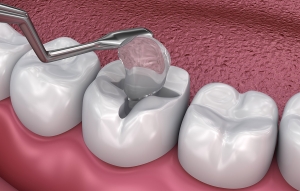Cavities are one of the most common dental issues people face. They can happen at any age, and if you ignore them, they only get worse. At first, a cavity may seem like a small problem, but over time, it can lead to severe tooth damage, infections, and even tooth loss. The longer you wait, the more complicated — and expensive — treatment becomes.
The good news is that cavities don't appear overnight. There are warning signs your mouth gives you, and if you catch them early, your dentist can fix the problem quickly, usually with a simple filling. But if you don't recognize these signs, you may end up needing more complex treatments like root canals, crowns, or even implants.
To help you protect your teeth, here are five sure signs that you might have a cavity.
1. Toothache
One of the most common warning signs of a cavity is tooth pain. In the early stages, you might only feel pain when chewing hard foods like nuts or candy. Over time, the pain can appear even when you're eating something soft or drinking a warm or cold beverage. Eventually, the ache may become constant, making it hard to ignore.
If you notice tooth pain, don't wait until it gets worse. A dentist can find the cavity early and stop the damage before it spreads deeper into your tooth. The sooner you act, the easier — and less costly — the treatment will be.
2. Tooth Sensitivity
Another early symptom of cavities is sensitivity. This often feels like a sharp or tingling sensation when you eat or drink something hot, cold, sweet, or acidic. The reason this happens is because bacteria break down your tooth's enamel, the hard layer that protects the sensitive nerves inside. Once the enamel thins, the nerves are exposed, and that's when sensitivity begins.
At first, sensitivity may come and go, but as the cavity worsens, the discomfort becomes more frequent. You might try using toothpaste for sensitive teeth, and in some cases, it may help for a while. But if the problem continues, it's likely not just sensitivity — it's a cavity. That's when you need professional care.
3. Holes or Pits in Your Teeth
If you can see or feel a hole in your tooth, it's almost always a cavity. Sometimes, these holes are too small to notice without a mirror, but you might feel them with your tongue. The chewing surfaces of your back teeth are the most common places for cavities to form because food particles and plaque can get trapped there.
If the hole is deep enough, it may require more than a filling. In some cases, your dentist may recommend a root canal or a dental crown to save the tooth. This is why checking your teeth regularly in the mirror — or better yet, having routine dental checkups — is so important.
4. Dark Spots or Discoloration
Cavities can also show up as dark spots or stains on your teeth. At first, it may look like a small stain, but over time it can grow larger and darker. Discoloration happens because the enamel is breaking down and decay is spreading. Sometimes, these spots appear before an actual hole develops, which means they're an early sign of trouble.
If you notice a dark mark on your tooth, don't assume it's just a harmless stain from coffee or tea. A dentist can tell if it's actually a cavity starting to form.
5. Chipped or Cracked Teeth
Biting down on something hard, like ice or candy, can sometimes chip or crack a tooth. If your tooth was already weakened by decay, that small chip could be a sign of a cavity underneath. Once a tooth is chipped, bacteria can enter more easily, causing the cavity to spread quickly.
If left untreated, a cracked or chipped tooth may not be repairable, and you could end up needing it removed. This is why any damage to your teeth, no matter how small, should always be checked by a dentist.






